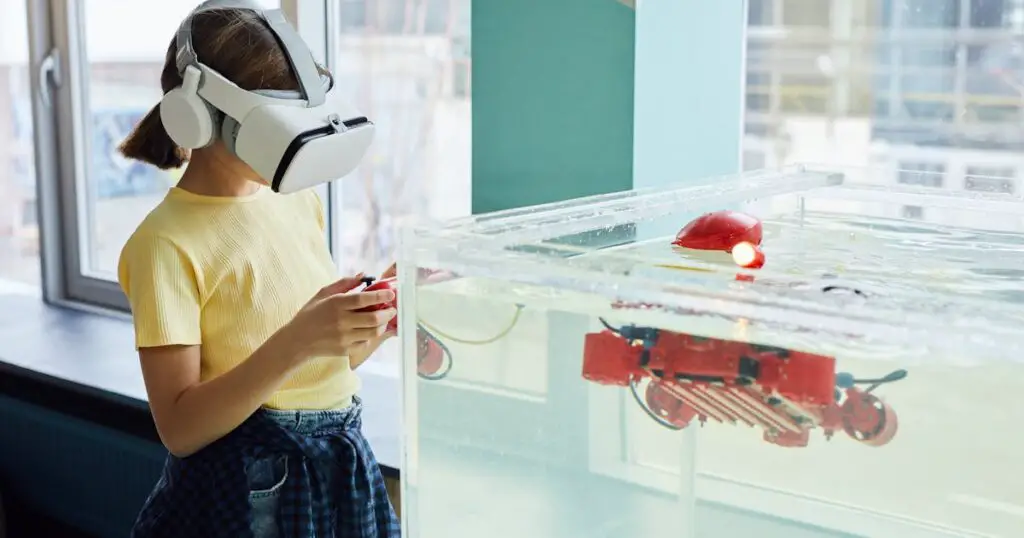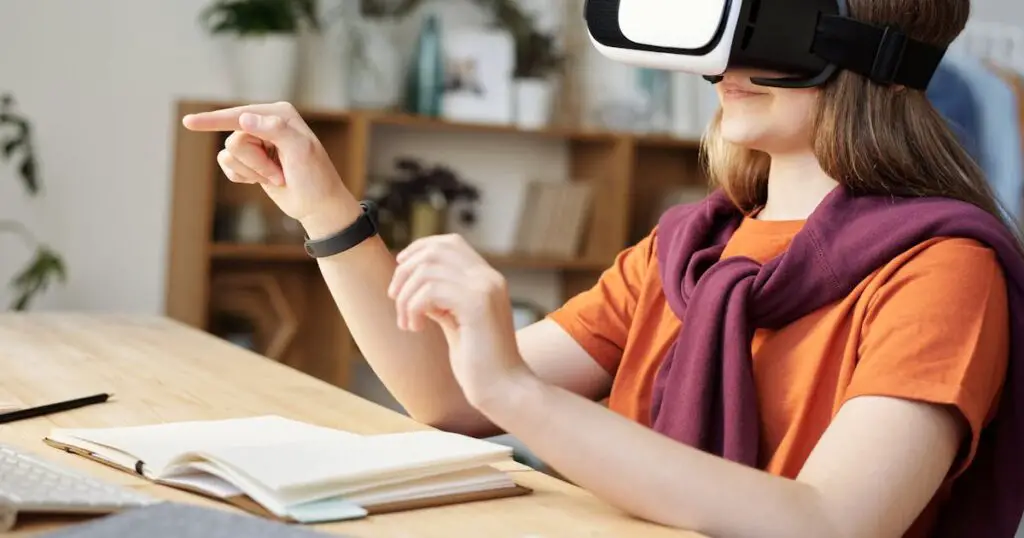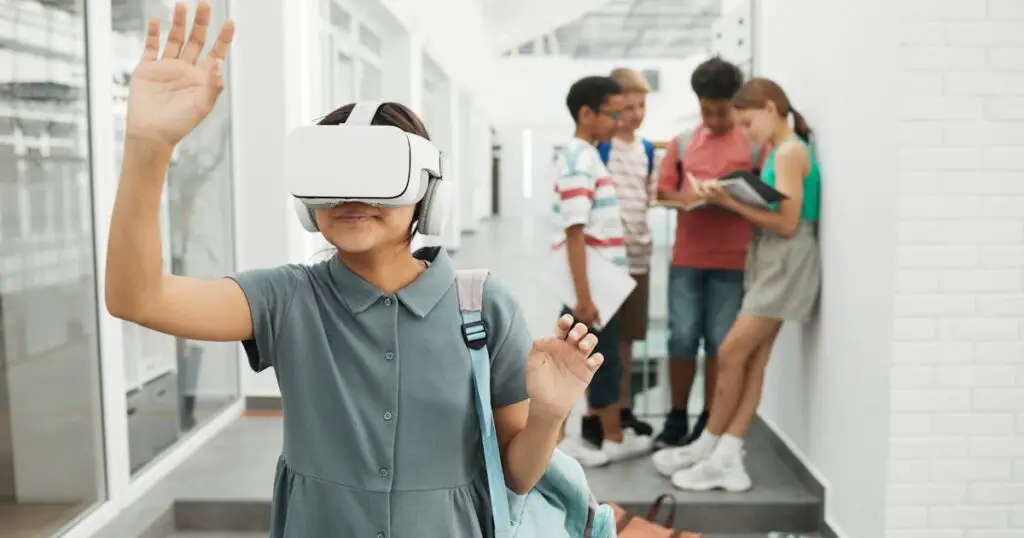Key Takeaway: We're exploring innovative ways to enrich our community through virtual reality (VR) in education. VR not only enhances academic outcomes but also builds empathy, social skills, and knowledge retention. It's transforming education by making it more immersive and inclusive, fostering a connected community.

Virtual reality has rapidly become a popular tool in education, offering students an immersive and interactive learning experience. With virtual reality technology, students can explore historical sites, dive into science experiments, and even travel to different countries without ever leaving the classroom.
But beyond its entertaining qualities, virtual reality also brings significant educational benefits. This article will discuss how virtual reality can enhance learning and improve student outcomes. From building empathy to enhancing engagement, let’s explore the incredible benefits of virtual reality education.
Building Empathy
One of the most powerful benefits of using virtual reality in education is its ability to build empathy among students. By immersing students in different scenarios and perspectives, virtual reality allows them to understand and empathize with others’ experiences. For example, students can use virtual reality to experience life in different cultures, physical disabilities, or historical events.
This firsthand experience helps students develop a deeper understanding and appreciation for diversity and inclusivity. As a result, students become more compassionate individuals who can better relate to others.

Developing Collaboration and Social Skills
In addition to building empathy, virtual reality can also help students develop collaboration and social skills. Through virtual reality experiences, students can work together with their peers in a simulated environment. This encourages teamwork, communication, and problem-solving skills as they navigate challenges together.
Virtual reality also breaks down physical barriers, allowing students from different locations to collaborate on projects and learn from each other’s perspectives. By to traditional learning methods the difficulty of these essential skills, students are better equipped to succeed in their future careers and make meaningful contributions to society.
Boosting Knowledge Retention
One of the biggest obstacles to traditional learning methods is retaining information. However, virtual reality has proven to be an effective tool for boosting knowledge retention. With its immersive and interactive nature, virtual reality provides a multisensory experience that engages students on a deeper level.
By appealing to visual, auditory, and kinesthetic learners, virtual reality can help students retain information more effectively. A study by the University of Maryland found that students who learned through virtual reality had a 9% increase in factual recall compared to traditional learning methods. This demonstrates the significant impact of virtual reality on knowledge retention.
Supporting SEND Learning
For students with special educational needs and disabilities (SEND), traditional learning methods can be challenging to navigate. However, virtual reality offers a more inclusive approach to education by providing a personalized learning experience for these students.
Virtual reality allows teachers to tailor lessons according to individual needs, making it easier for students with SEND to grasp difficult concepts.
Furthermore, virtual reality also removes physical barriers, enabling students with mobility impairments to experience hands-on learning in a virtual environment. This inclusive approach to education ensures that all students have equal access to quality education.
Enhancing Student Engagement

Undoubtedly, one of the significant benefits of using virtual reality in education is its ability to enhance student engagement. Traditional classroom settings can often become monotonous and disengaging, leading to students losing interest in the lesson.
However, virtual reality adds an element of excitement and interactivity to learning, making it more engaging and captivating for students. This increased engagement can motivate students to participate actively in their learning, resulting in better academic outcomes.
FAQs
In this section, we will be delving into some of the most common inquiries and curiosities that surround our topic.
Is virtual reality education expensive?
While implementing virtual reality technology may require some initial investment, it can save costs in the long run. Virtual reality allows schools to create virtual field trips and simulations, eliminating the need for costly real-life excursions.
Are there any age restrictions for using virtual reality in education?
Most virtual reality experiences are suitable for children aged 7 and above. However, always check the recommended age range before implementing virtual reality in the classroom.
Can virtual reality replace traditional teaching methods?
Virtual reality should be used as a supplement to traditional teaching methods, not a replacement. It offers an additional tool for teachers to enhance learning and engage students, but face-to-face interaction with teachers is still crucial for student development.
Conclusion: Virtual Reality Education Benefits
In conclusion, virtual reality education brings numerous benefits that can transform students’ learning. From building empathy and collaboration skills to boosting knowledge retention and engagement, virtual reality has the potential to revolutionize education.
As technology continues to evolve, we can expect even more exciting advancements in virtual reality education that will further enhance the learning experience for students of all ages. Let’s embrace this innovative tool and empower our students with a well-rounded, immersive education.



Leave a Comment
You must be logged in to post a comment.